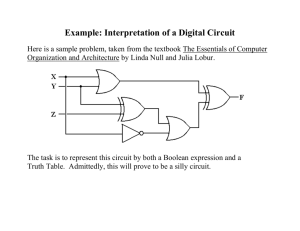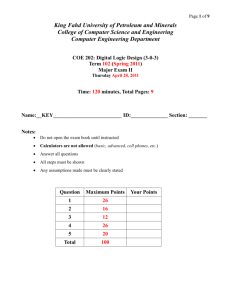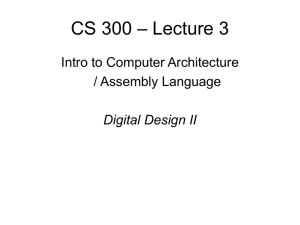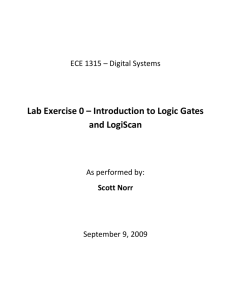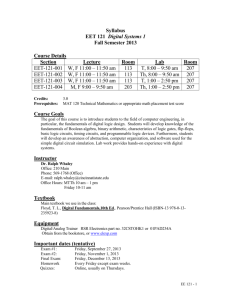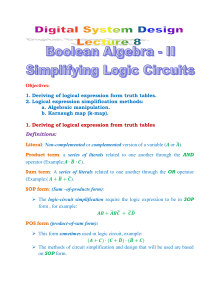Homework1
advertisement
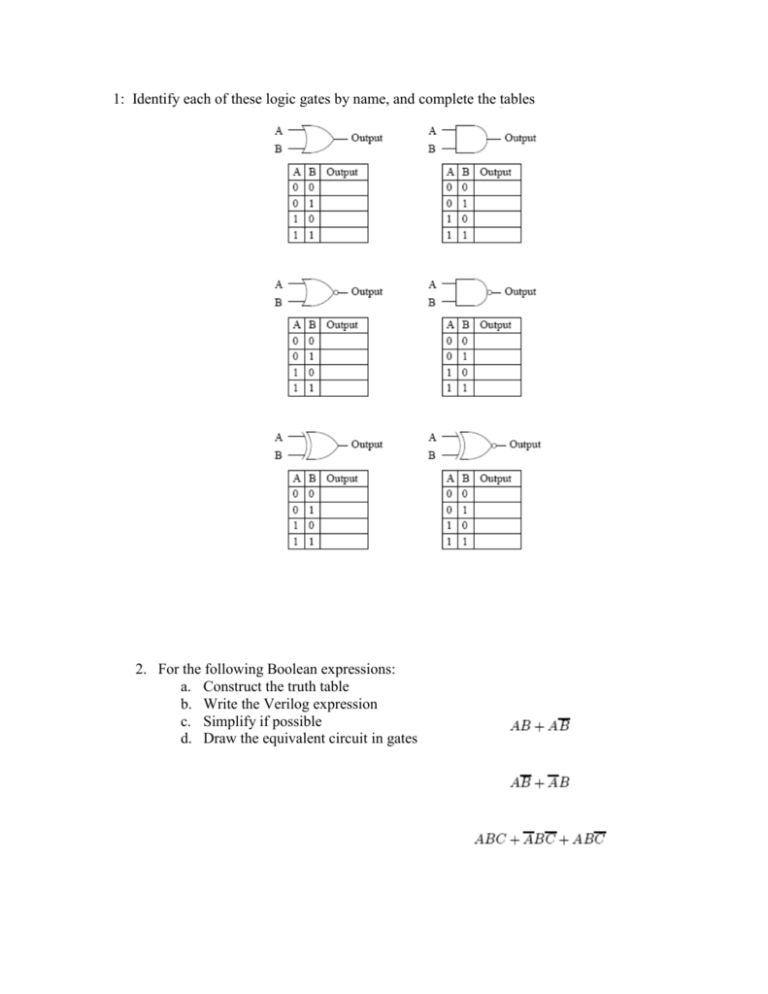
1: Identify each of these logic gates by name, and complete the tables 2. For the following Boolean expressions: a. Construct the truth table b. Write the Verilog expression c. Simplify if possible d. Draw the equivalent circuit in gates 3. For the following circuit: a. Construct the truth table b. Construct the Boolean expression, starting with the SoP, then simplifying c. Write the Verilog expression 4. For the following 3 truth tables: a. Construct the SoP Boolean expression and simplify b. Write the Verilog expression c. Draw the circuit in gates 5. For the following truth table, design the circuit with the fewest possible gates. 6. For the following PoS expressions, simplify and draw the resultant circuits: 7. The following truth table describes a NAND gate: Write the SoP and PoS expressions separately and compare. When you’ve completed that, you will see why sometimes PoS is better. For the next 2 truth tables, do the same: write the SoP and PoS expressions, and use Demorgan’s theorem to show that they are equivalent. Simplify and draw the circuit in gates. 8. A seven segment decoder is a digital circuit designed to drive a very common type of digital display device: a set of LED or LCD segments that render the numerals 0 through 9 at the command of a four-bit code: a. Why a 4-bit code? Would a 3-bit code do? b. Write the truth table that describes the logic needed to turn the bit code into the corresponding display number, assuming that a “1” means the segment is “lit” c. Write the Boolean equation for each of the 7 outputs using either SoP or PoS, your choice, and simplify. d. Draw the corresponding circuits.


